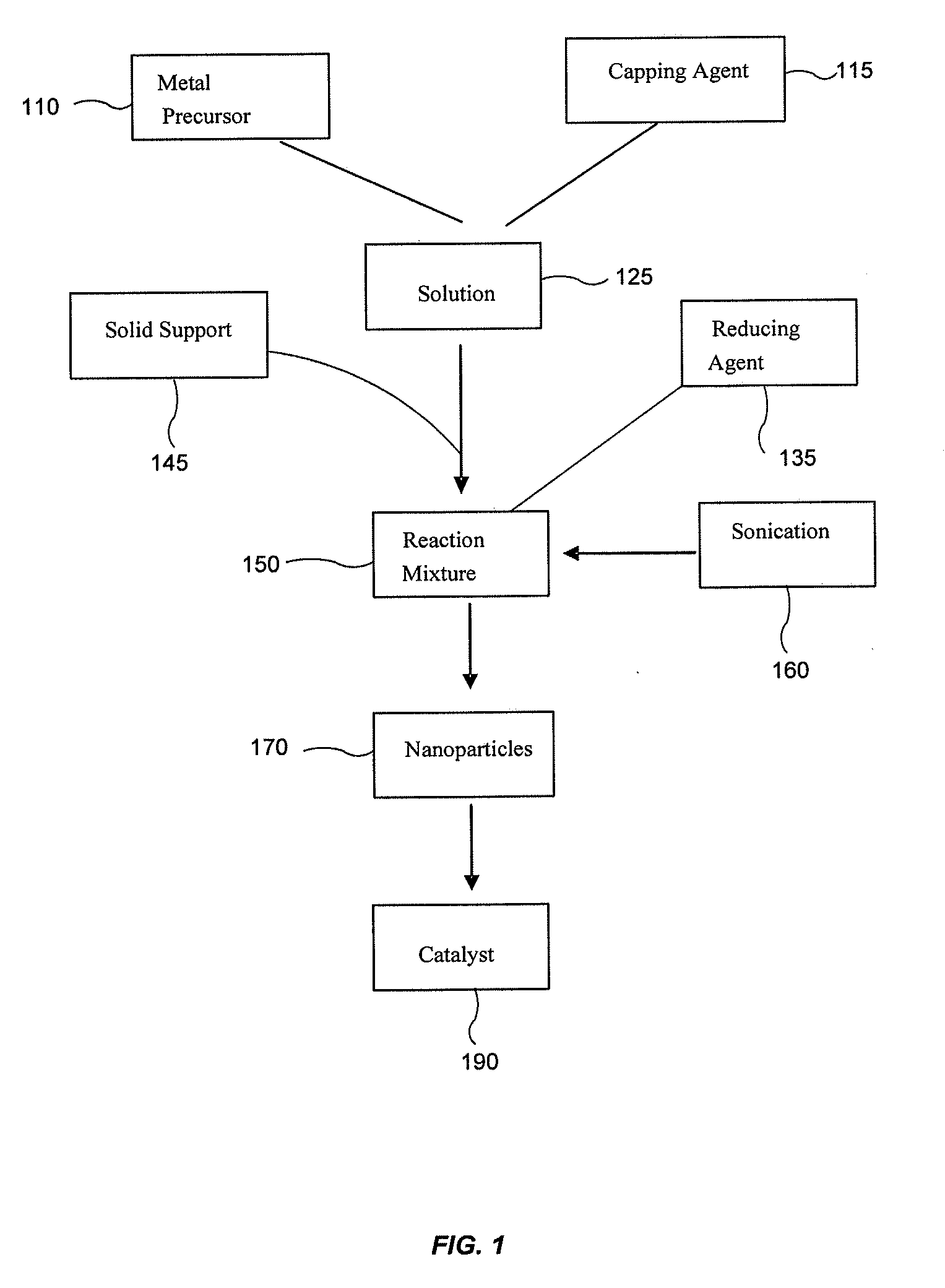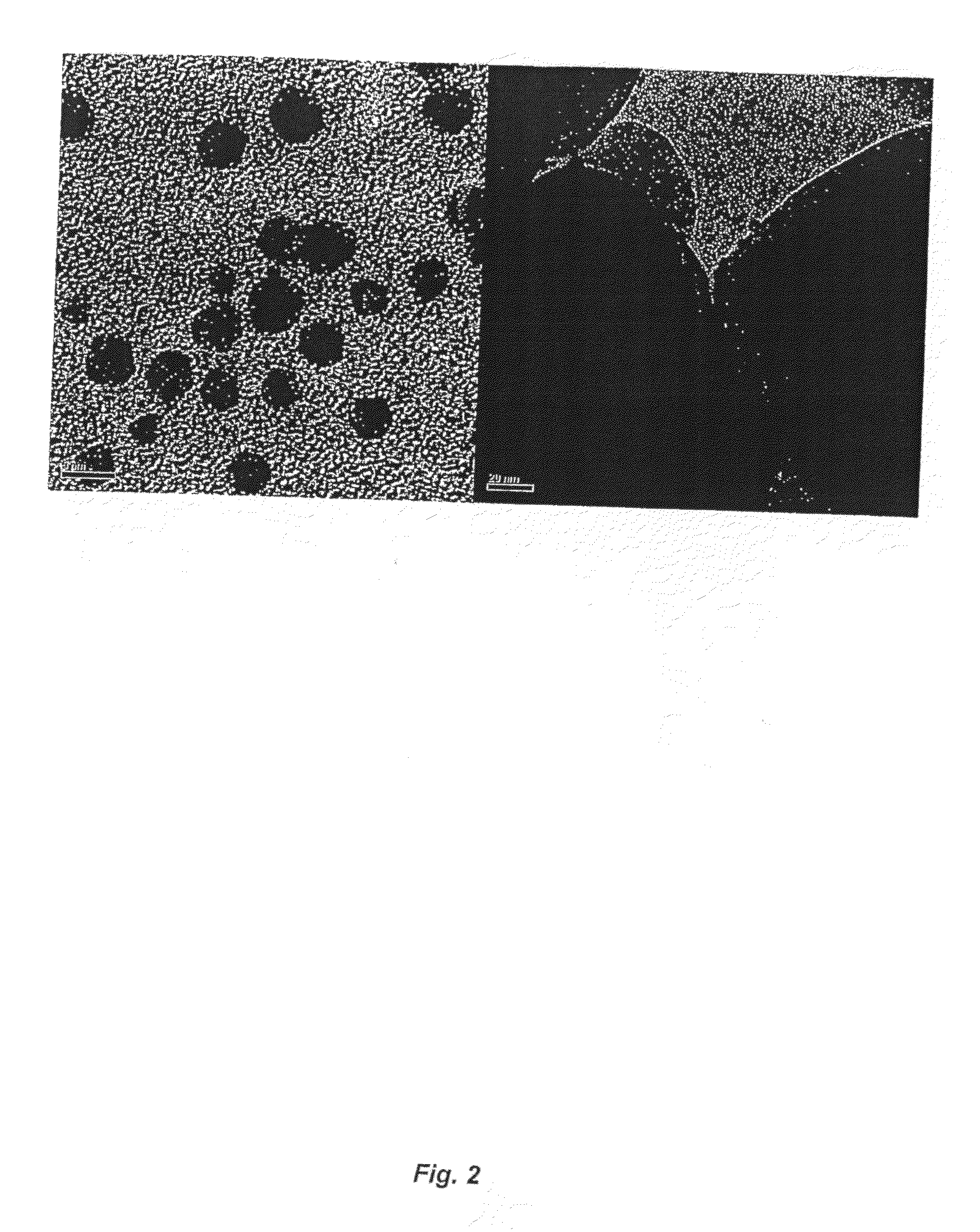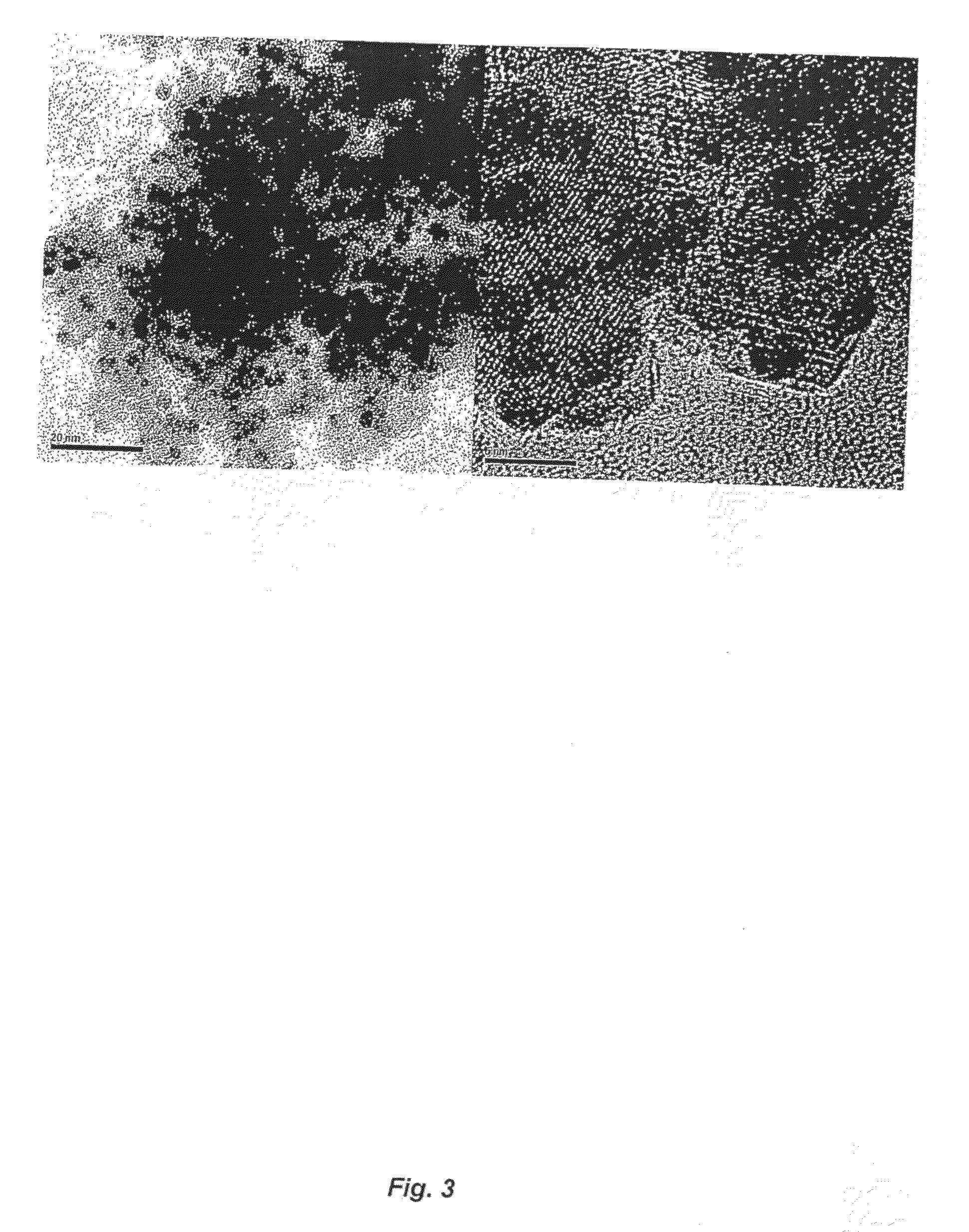Highly Dispersed Metal Catalysts
a metal catalyst, high-dispersion technology, applied in physical/chemical process catalysts, organic compound/hydride/coordination complex catalysts, separation processes, etc., can solve the problems of insufficient interaction between gold particles, catalyst life, and inability to commercialize au-based catalysts, etc., to achieve high efficiency and stable
- Summary
- Abstract
- Description
- Claims
- Application Information
AI Technical Summary
Benefits of technology
Problems solved by technology
Method used
Image
Examples
example 1
Preparation of Au Catalyst
[0067]The Au catalysts were prepared using HAuCl4 as a precursor, NaBH4 as a reduction agent and amino acid as a capping agent. During the reduction period, sonication was applied (e.g. 20 seconds). Next, the catalyst was separated using centrifuge and washed with deionized water. The advantages of our method are low reaction temperature and suitability for various catalyst supports. The catalytic activities of the catalysts for CO oxidation in air and in the presence of H2, respectively, are comparable to the best prior art results.
[0068]TEM images of the catalysts of Au / TiO2, Au / Fe2O3, Au / SiO2, (B) Au / CeO2, (C) Au / Al2O3, Pt / TiO2 are presented in FIGS. 2, 3, 4 and 10, respectively. The Au colloids are 3-5 nm in diameter in the solution (FIG. 2A). After deposited onto TiO2 (FIG. 2B), or Fe2O3, or other catalyst supports, there is almost no change in size for Au particles. Also, these Au particles are highly dispersed on these catalyst supports (FIG. 2B, FIG...
example 2
Activity Comparison of the Catalysts of the Present Invention with the Best Literature Results
[0069]
TABLE 1A comparison of preparation conditions and results of our catalyst with best literature results.CO content (ppm)Au particleCatalystafter reaction inCO in airbMethodTemp (° C.)Time (hr)size (nm)loading (%)reactant gasa(ppm)ICESRT0.53-5170-80(Au / Fe2O3)ICESRT0.53-55(Au / Fe2O3)Co-Pc802-33.7550no datad(Au / Fe2O3)D-Pc804-8 1-3.36-8poorc(Au / TiO2)PcRT~12-33no(Au / Fe2O3)aReactant gas contains 1% CO, 1-2% O2, 77% H2, 20% CO2.bReactant gas is 1% CO in air (10,000 ppm).c“Co-P” refers to Co-precipitation method (Landon, P., et al. Chem. Commun. 2005, 3385); “D-P” refers to Deposition -precipitation method (Zanella, R. et al., J. Phys. Chem. B 2002, 106, 7634); “P” refers to Precipitation method (Cheng, W. H. et al., Catalysis Today, 2004, 97, 145).dNo catalytic data reported in Landon, et al, One sample was prepared and tested by the inventors.
example 3
Oxidation of CO in Air for Mask Application
[0070]The oxidation of CO in air on Au / TiO2 and on 1% Au / Fe2O3 are presented in FIG. 5 and FIG. 6, respectively. Complete removal of CO can be achieved at room temperature for the two catalysts under high space velocity, and at 0° C. for 1% Au / Fe2O3 catalyst. However, at −63° C., the CO conversion decreased to ca. 2.35% from 100% on 1% Au / Fe2O3 (FIG. 6B). The test shows that the life of the catalyst is at least longer than 200 hrs. Further testing of the stability was not conducted. Both 1% Au / TiO2 and 1% Au / Fe2O3 are suitable for the application in mask and other breathing devices.
PUM
| Property | Measurement | Unit |
|---|---|---|
| temperature | aaaaa | aaaaa |
| operating temperature | aaaaa | aaaaa |
| flow rate | aaaaa | aaaaa |
Abstract
Description
Claims
Application Information
 Login to View More
Login to View More - R&D
- Intellectual Property
- Life Sciences
- Materials
- Tech Scout
- Unparalleled Data Quality
- Higher Quality Content
- 60% Fewer Hallucinations
Browse by: Latest US Patents, China's latest patents, Technical Efficacy Thesaurus, Application Domain, Technology Topic, Popular Technical Reports.
© 2025 PatSnap. All rights reserved.Legal|Privacy policy|Modern Slavery Act Transparency Statement|Sitemap|About US| Contact US: help@patsnap.com



